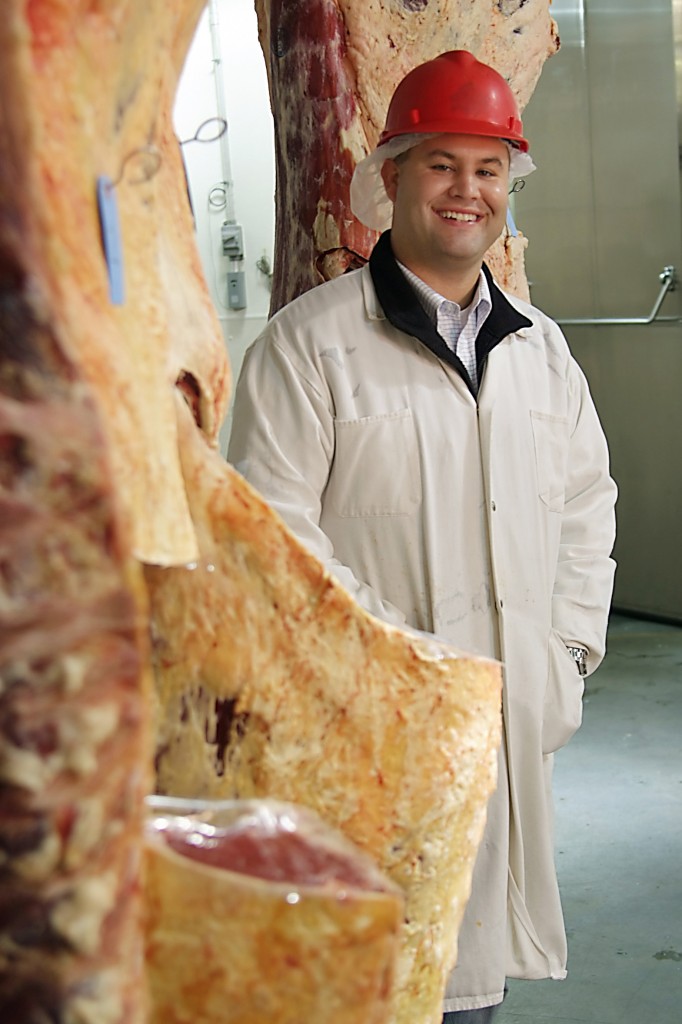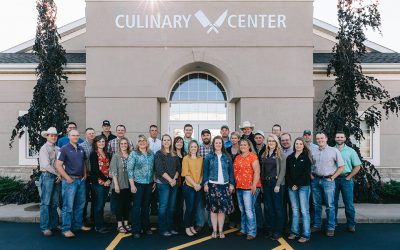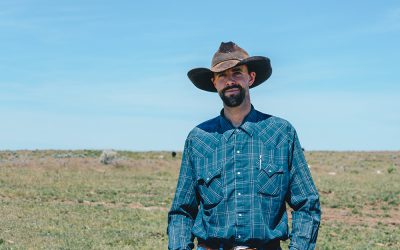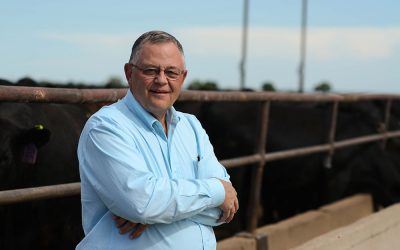
Mythless?
November 21, 2011
I’m sure my droves of loyal followers were all heart-broken to find a familiar column absent from last week’s web presence.
OK, back to reality, maybe there were a few of you wondering, “What happened to Mythbuster Monday?” That leads us to today’s falsehood:
Myth: Mythbuster Miranda is all out of myths!
Fact: I have a really good excuse for missing last Monday’s post. I had a baby. (Doesn’t get much better than that, does it?) We welcomed little miss Cassidy Catherine to our family on November 12th. So while I’m spending time getting to know this new love of my life, you’ll get a chance to get acquainted with another member of our team.
Meet David O’Diam, assistant director of packing:
He’s a born-and-bred Ohio farm kid who holds an undergraduate and master’s from The Ohio State University. He ran the OSU meats lab, so it’s no surprise that among his hobbies of golf, skiing and watching sports, he also fancies himself a pretty good meat smoker and grill master.
David makes connections, educates and is the go-to guy for anything CAB Prime or CAB Natural. He also watches the markets, both live cattle and boxed beef, like a hawk. He keeps our sales and supply development staff updated on what’s shaking in the beef trade and now he’ll do the same for you.
Here’s a sneak peek at the info David’s got up his sleeve to share:
Another week of significant production decreases allows packers to force live cattle prices down $2-$3/cwt. By reducing kill over the past two weeks, packers were able to regain some of their lost bargaining leverage. Additionally, last week packers were buying for this week, a holiday shortened kill which only totaled 579K last year – again strengthening packer buyers positions.
In light of kill reductions, packers were also able to increase boxed values and thereby, margins. Boxes increased $7.30 (3.75%), $4.20 (2.42%) and $4.00 (2.75%) for CAB, CH and SE, respectively. Middle meats continue to provide significant support to the overall carcass value as CAB rib and loin primals increased in value 6.38% and 4.10%, respectively. Retail buyers remain hesitant to make large out front commitments due to historic pricing and in light of the upcoming holiday.
Check back each Monday to read his new weekly feature, welcome David and enjoy the Meat Market Minute!
May your bottom line be filled with black ink,
~Miranda
You may also like
Beef Leaders Institute: An original experience
Past experience showed me enough to get where food comes from, but not enough to understand how it gets from point A to B and then to me. Now I get the beef story, and a huge part of the credit goes to the week I spent with the American Angus Association’s Beef Leaders Institute (BLI) in June.
Of dreams and going all in
“I wish I could just move west and buy a ranch.” It’s something I’ve heard my dad mutter for years. He’s been around agriculture all his life, stacking hay as a teen and raising Hereford steers for the freezer as an adult. But Maryland is not big country. These days, he’s living vicariously through his three daughters’ 4-H projects and FFA events (and my internship here at CAB of course).
Not one for small talk
Uncomfortable silence.
If you don’t like it, you know the kind. Perhaps you’re just getting to know somebody, and you reach a point in the conversation where that silence hangs heavy and it makes you uneasy.


















